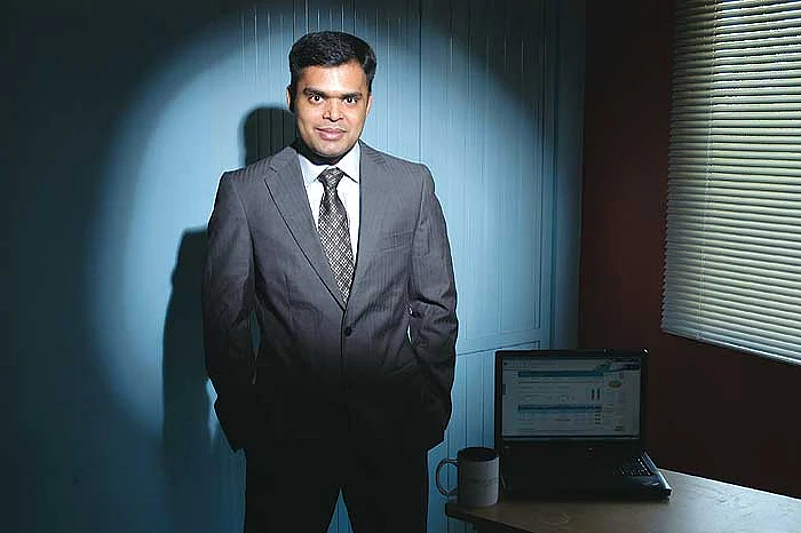There may have been a time when Shireesh Mukund Joshi, marketing director with mobile service company Bharti Airtel, could design a phone service no one could have resisted, using just his “gut” instinct. That’s impossible today; no one’s gut can be stretched around 130 million customers. What can be stretched is a number—or millions of them. Joshi has a team of numbercrunchers, plus he hires outside help, and together everyone trawls through vast tracts of customer information to divine what’s the right service, tailored to the right person, at the right price.
This isn’t like in the recent past, when the right “feeling” about a service was enough for a marketing team to peddle real hard. By now Indian companies have too many customers, too many conflicting demands, and enough raw data on users (more reliable than sample surveys or generic reports) to get a clearer handle on what they should be selling and how.
For instance, Joshi has analysed customer data to find out whether Airtel has more female or male customers. He confesses, cryptically, that on the whole in India, the mobile service market is skewed towards middle-aged men. Now, research points out that a gender divide does exist—and so, an untapped market is discovered. “There’s no way an organisation can know everything,” says Joshi, “What is happening is, periodically, decision-making is being helped by research.”
In many ways, number-gatherers, or the geeks who studied mathematics and statistics in school, are the mainstays of modern retail. Party to every secret detail of consumers and their behaviour, they can pull raw numbers—addresses, bill plans, payment patterns, billing amounts, frequency of shopping, locations shopped at, time spent in stores, etc—into shape, using software tools that only they best understand. From operating in the backroom, these trendspotters are now at the vanguard of corporate strategy.
Iype Isac, CTO at BankBazaar.Com, an online financial service company that helps people compare and access loans and insurance, says a hunch or gut feeling can no longer drive a financial service business. What can drive strategy, he says, is using the “info base”. Done right, this can increase profits, reduce costs and cut losses. Isac, who holds a Masters degree in computer science from Virginia Tech, analyses customer data to determine the possible profile of a group of people (by extension, a person in such a group) that is least, or most, likely to repay a loan. “The ultimate target for a bank,” Isac says, “is to be able to offer loans to a set of people who are most likely to repay—100 per cent repayment, that’s a bank’s ultimate goal. The data helps us determine who these people might be.”
Typically, information on customers is ‘stretched’ by the statistician until it yields something useful, usually a tid-bit about an overlooked market segment. Or, he may chance upon a bunch of users who can be steered towards higher-value services. “The ultimate goal is customisation, but also to find out who the next customer is, what he’ll buy, and how much he’ll spend,” says Abraham Thomas, business head, Market Equations, a Bangalore-based market research outsourcing firm.
Towards this end, statisticians are handsomely rewarded—a masters-holder with a sector specialisation will match an engineer’s pay scale. This is being borne out at places like MDI in Gurgaon, where enrolments have risen steadily for training in statistics-related courses. “Enrolment has climbed from 24 to 42 students now (out of 400), over three years,” says Prof Ashok Panjwani of MDI. “Most of these people are driven by the demand for statistical expertise,” he says.
Jobs aren’t hard to come by either. For instance, Max New York Life India has an in-house research team (mostly made up of statistics graduates), who report to the marketing head. This team recently figured out that Indians are buying life insurance younger; aged 28 years instead of the usual 32. The numbers immediately opened the possibility to market insurance to a new age-group. Says Anisha Motwani, EVP, marketing, “All our customer campaigns come out of data analytics.”
Late last year, the Max New York Life team dug a little deeper into the Indian insurance market and found 58 per cent Indian parents were saving a little every month for their child’s education. Surveyors spent a day each with six families in six large cities, and found that families wanted education insurance for children, but that they found the contracts so “dull” that they often neglected renewing premiums.
“Child plans assured people that they would help raise all-rounders. But the insurance contracts were considered dull, ordinary, official,” says Motwani. This insight into the mind of the customer was just the push Max needed to launch ‘Shiksha Plus’, an insurance scheme for children that ships in a brightly-coloured box—like a box of toys or cereal. “Now that the look and feel of insurance matches the emotional need for the product, the scheme is a hit,” says Motwani.

Arif Khan, Vertex
Dr Arif Khan, senior manager of “decision science” at Vertex, is completely preoccupied with interpreting raw data correctly. “Or you could end up targeting a market that doesn’t exist,” he says. Of late, he gathers that more women than men make regular credit card payments.
It’s a similar story at retailer Pantaloons, part of the Future Group, where an in-house ‘fulfilment and analytics’ team crunches customer data gathered from ‘Green Card’, the loyalty programme, which has a million members. Altogether, they account for half the sales at Pantaloons. (Across the board, the Future Group has 250 million customers, including repeat visitors.) “What the Green Card members buy helps decide the product mix, especially between cities,” says Zahid Shaikh, marketing head.
Such is the flavour of modern-day marketing’s latest tool, known differently as data analytics, customer information research, or the art of “deep-diving into” the spending habits, saving patterns, interests, beliefs, location, travels, earning power and, most important, future expectations of customers.
Statisticians no longer prepare Excel charts, nor do they keep mum. “Now, the role of managers is open to them,” says Arif Khan, a senior manager of “decision science” at Vertex Customer Services, a customer service-outsourcing firm. A statistician himself, Khan admits he felt most jobs would relegate his expertise to “some backroom”, until, in recent years, firms started to combine statistical information with psychological insight, raising the statistician’s profile to someone who can make a material difference to strategy.

Research team, Evalueserve
This closely-knit gang of five analyses transaction data—what people are buying, where and when, as well as buyers’ psychological leanings (whether they are stay-at-home types or outgoing, male or female, young or old). Field surveys back up data on spending patterns.
“Today, a statistician can overturn many myths, open new markets, and estimate the success of launches, provided the statistician also has the correct sector expertise,” says Aditya Jain, AVP, market research, at Evalueserve, a knowledge process outsourcing firm. “They can help better segment customers, better target strategy,” says Jain. In an increasingly competitive market, ‘differentiation’ between one service and another is in the mind of the customer, explains Jain. In this situation, statistics and analysis can lead companies to exactly that service which will “make people pay”, he says.

Research Unit, HDFC Bank
HDFC’s 20-strong Central Intelligence Unit figures out where ATMs should be, what high-end banking services should cost. It maintains an advanced database of customer behaviour to determine patterns in credit and debit card usage, banking hours, size of transactions, loan amounts and so on.
Analysis also helps companies bust myths. For instance, Khan points out, women have been revealed to be far better at paying back credit card debt than men. And many of the so-called “high-flying” customers are now exposed as “hollowed-out”: the middle-aged man with a fancy watch, a big car and a penthouse is not an unquestionably “good” debtor, analysis shows, he says.
Such customer transaction information is also helping improve services, or launch new products on a surer footing, says Rohit Mull, marketing head, HDFC Bank. HDFC has analysed, using its dedicated team of analysts called “Central Intelligence Unit”, usage patterns for debit and credit cards, including when and where customers use debit and credit cards, how much they spend per transaction, how much cash they withdraw, and the time and frequency of withdrawal. This information now helps the bank decide where the next ATMs should be set up, for instance.
“Earlier, a crowded marketplace seemed like the right place for an ATM. It was almost that simple,” says Mull. “Now, we look at whether people in a locality are withdrawing cash often enough, say, from other ATMs nearby, to require a new installation.” HDFC’s 20-member EIU also sliced through enough ATM transactions of existing customers to predict, (accurately, says Mull) the design of his customised service for high-net worth individuals, known as Imperia.
Clearly, trendspotters are making a difference to what you see on store shelves, and to how much you pay for what. As products and services rain down on Indian customers, these data-backed persuaders try to make some sense out of all that confusion. And that helps customers make up their mind.


























